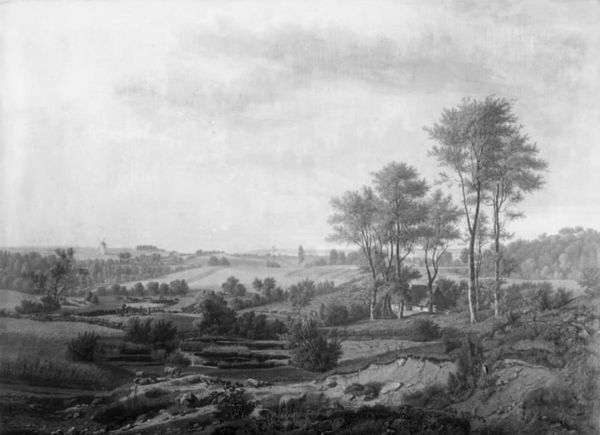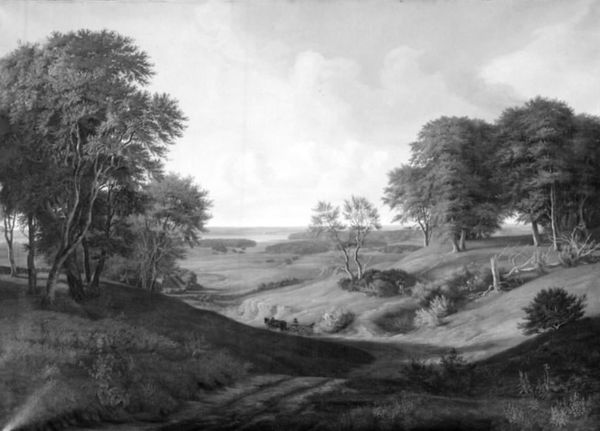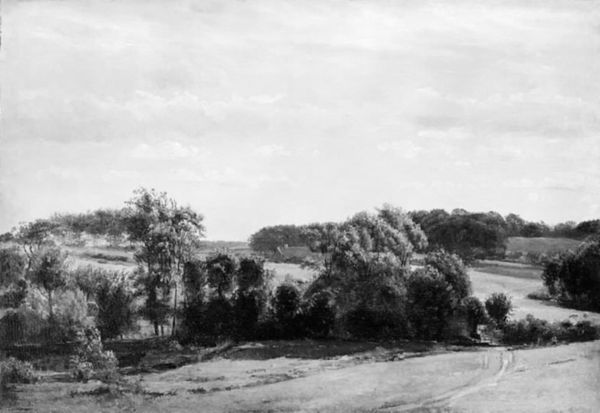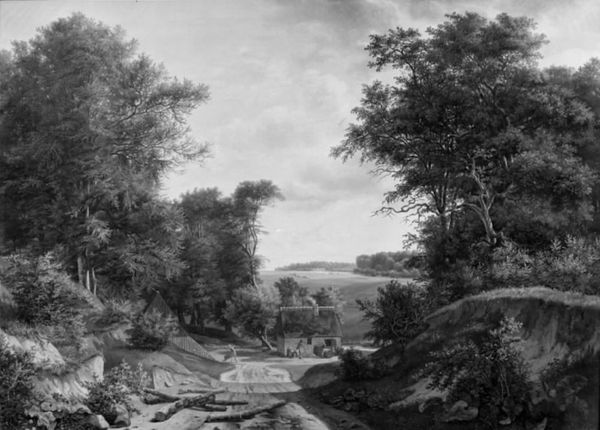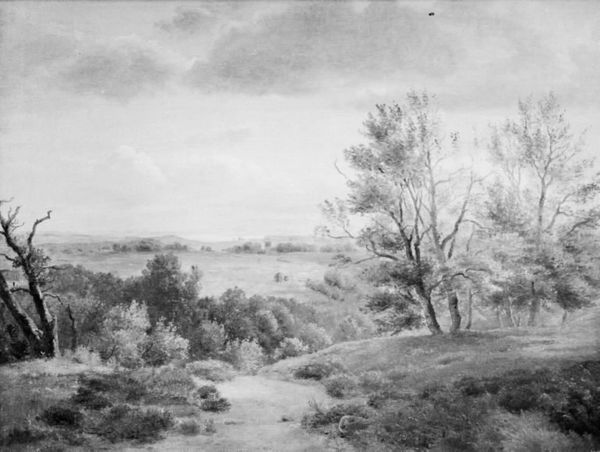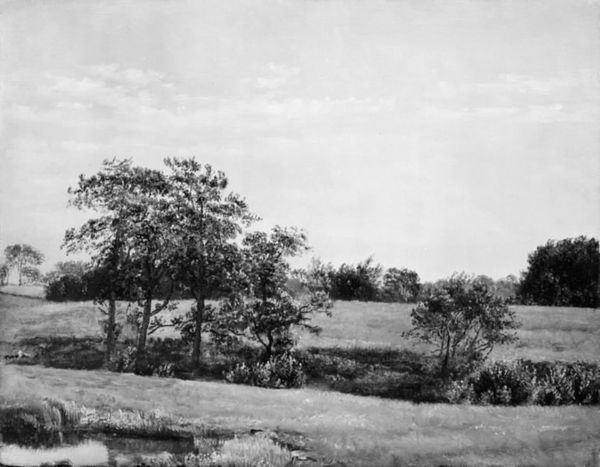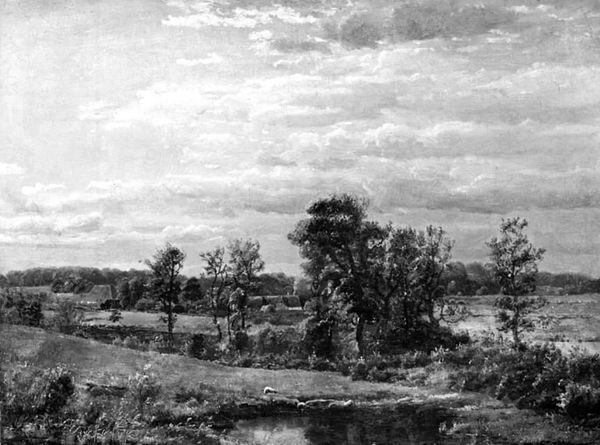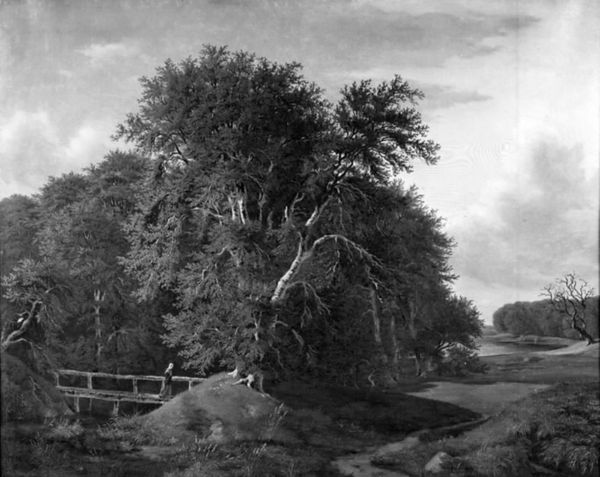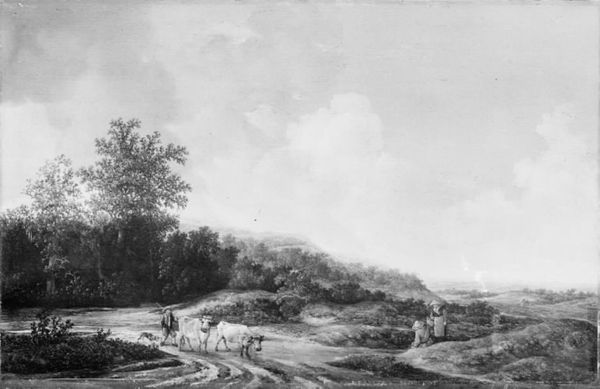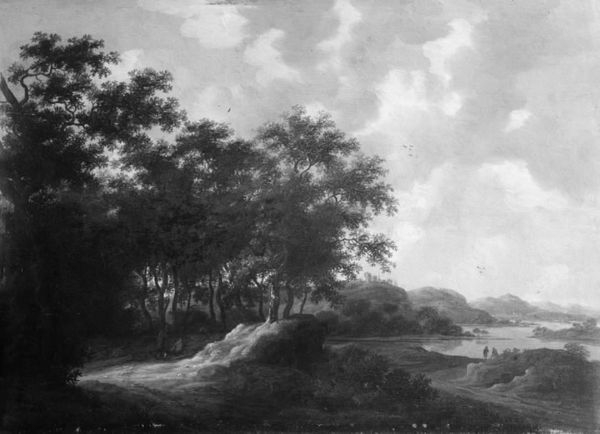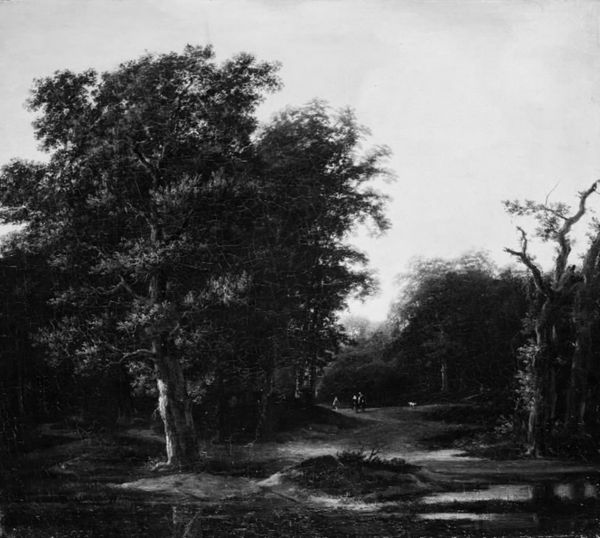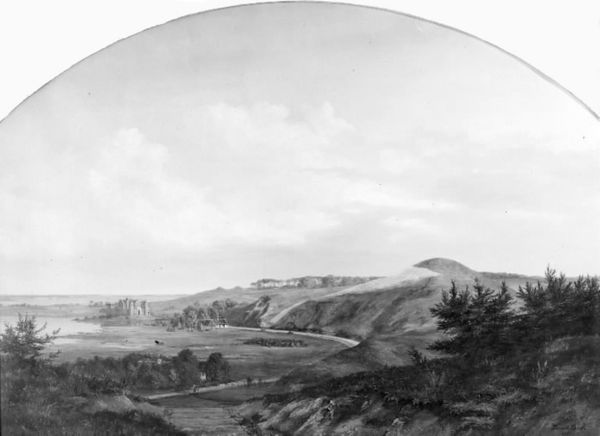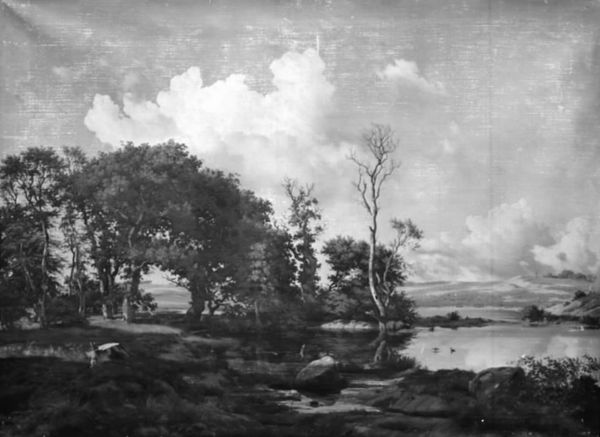
painting, oil-paint
#
painting
#
oil-paint
#
landscape
#
romanticism
#
monochrome
#
realism
#
monochrome
Dimensions: 95 cm (height) x 144 cm (width) (Netto)
Curator: Welcome. We're now viewing Dankvart Dreyer's "Tybring Banker, North Funen," painted between 1840 and 1841. It's an oil painting currently held here at the SMK. Editor: It's quite somber. Even without colour, the sheer weight of that overcast sky feels oppressive, almost claustrophobic. Curator: Observe the artist's use of light and shadow. The deliberate modulation creates a remarkable sense of depth, drawing the eye along the winding path, almost as a journey. How does it impact you? Editor: Roads always evoke movement and displacement. Considering the sociopolitical context of rural Denmark in the 1840s, a time of significant social upheaval and land reforms, one might ask, who is moving along that road and what are they carrying—or fleeing? Curator: The composition itself is fairly conventional, with a clear foreground, middle ground, and background, structured along a horizontal plane. But I wonder if you might reconsider its traditional framing in relation to its rendering in grayscale? What might this subtract from a romantic landscape such as this? Editor: The absence of colour highlights the power dynamics inherent in landscape painting. Is this scene a neutral depiction of nature, or a reflection of property ownership, social class, and perhaps, the disempowerment of those who worked the land, made more impactful because we've taken colour out of the conversation? Curator: Note the precise brushwork and detailing, particularly in the trees and foliage. The materiality evokes realism; despite the missing hues, one could accurately guess the vegetation in this rendering, pointing to close observation. Editor: Realism can be deceptive. By depicting a specific location—Tybring Banker—the artist may be grounding the painting in reality. But what isn't represented? Where are the labourers, the farmers who made this landscape productive? This conspicuous absence speaks volumes about visibility and erasure in the period. Curator: Indeed. What strikes me most is the meticulous attention to detail which lends to its almost photorealistic quality despite being created well before widespread use of photography. It highlights both the technical skill, as well as dedication to conveying landscape authentically. Editor: Ultimately, the painting serves as a potent reminder that landscapes are not neutral spaces. They are shaped by historical forces, power structures, and often, by the unacknowledged labour of those who remain unseen. Curator: Thank you for joining me. Editor: Thank you.
Comments
No comments
Be the first to comment and join the conversation on the ultimate creative platform.
